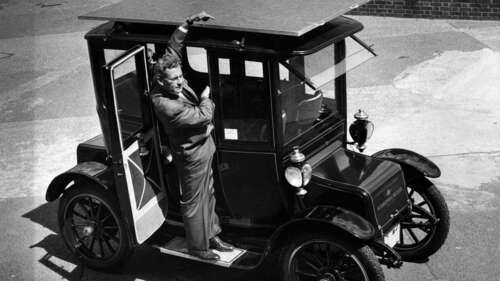
In the next few years, Baker became one of the top producers of electric vehicles in the world and produced 800 cars with over a dozen models, while claiming its factory was the largest in the world. Edison wasn’t the only famous customer — President William Howard Taft took the White House mobile and purchased a 1909 Baker for the first lady Helen Taft, and then later the 1912 Victoria model, which wound up being put to use by the next four first ladies as well.
A desire for higher speeds led to one of the first instances of misfortune for Baker. A speed trial was held in 1902 by the Automobile Club of America, and Baker entered a racing car that ultimately lost control and crashed into spectators, resulting in two deaths. Following another crash, Baker abandoned the record-breaking quest, though he is credited as the first person to cross the 100-mph barrier.
A series of mergers and the rising legitimacy of the internal-combustion engine contributed to Baker’s end. Detroit Electric surpassed Baker in 1913 and a later merger with Cleveland automaker Rauch and Lang saw the company streamlined into Baker, Rauch, & Lang. They produced the Owen Magnetic together, but the Baker company stopped producing electric cars after 1915. And while a few commercial electric vehicles were produced afterwards, the company’s run had essentially come to an end, just as the electric starter was being invented to make internal-combustion engine vehicles safer and more accessible.

